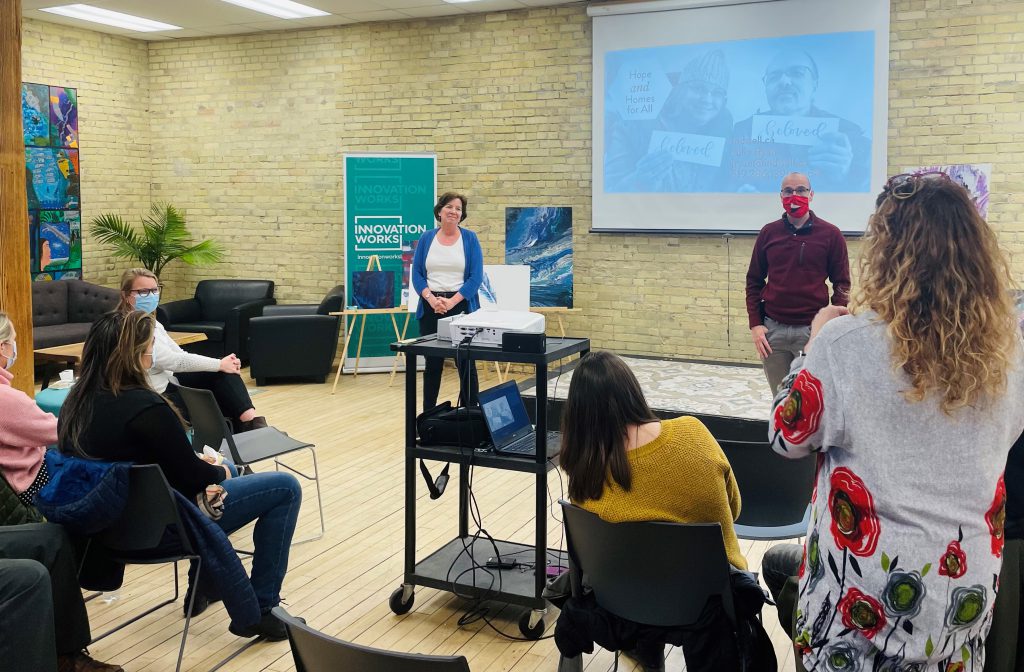
CRHESI members, Dr. Abe Oudshoorn and Jule Ryan spoke to Innovation Works co-tenants during a Brown Bag lunch talk this month on Solutions to Homelessness in London.
Abe’s past clinical work as a community nurse provided the base for his research agenda and desire to work at a higher level, aiming to transform systems to end homelessness in London, Canada and beyond.
Historical context on homelessness:
- Pre WWII, housing instability meant the use of informal dwellings, people built their own shelters, such as shacks (around Carling Heights for example).
- Post WWII, around 1965, public, social housing was introduced.
- Government built and funded the number of units needed to meet the need at that time. These structures built in 1970’s are the same structures still in use in London today.
- Rent was geared to income (30%).
- 1980’s: Housing construction stopped in Canada–Global financial crisis + conservative governments = stop spending
- Abe noted that in the 2006-2015 era, PM Harper flipped this austerity practice and instead encouraged gov spending to stimulate the economy
- Late 1980’s, the first concerns were noted in the House of Parliament about homeless constituents
- 1990’s: Canada builds shelters (such as Salvation Army, Mission Services, domestic violence shelters)
- Abe says: It’s good that we care! But, systemically not good, as shelter living has many deleterious effects and if it is the default solution, people are unwell, unhealthy
- 2004: Centre of Hope is built, which increased beds but they are filled and the need keeps increasing.
- 2008-2016: We introduce the Housing First model: ‘rehouse’ people with supports
- 2016: With a 4.5 % vacancy rate and more new building, 200 people are rehoused and Centre of Hope transitions some space to rental rooms for substance use recovery.
- 2018: We hit a brick wall. The vacancy rate in London dives and capacity for supporting homeless people is maxed out. Add in a depressed housing market in London
- 2021: London is one of the fastest growing communities in Canada which means high competition in the housing market.
There are many, too many stories and examples of people losing their housing due to bad faith evictions.

